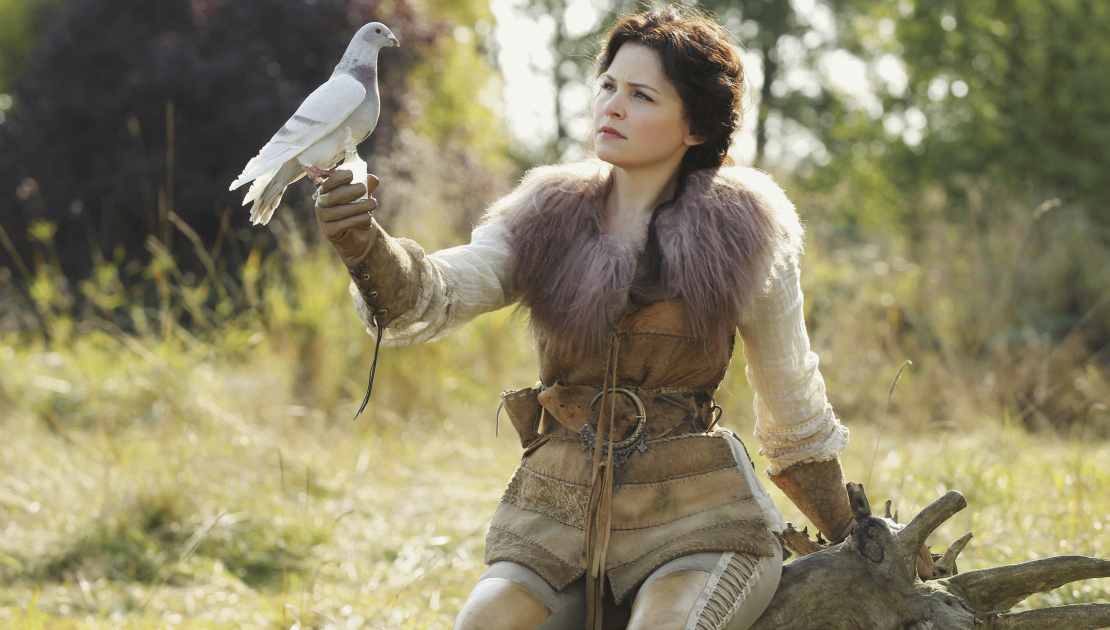Once Upon A Time's Snow White
Snow White retellings seem to be all the rage these days. Perhaps it's the iconic nature of the story, combined with its outdated presentation of its female characters, that make it perfect for a modern retelling. However, as I've argued before, many modern versions fail to improve on the Disney version's poor female characters, as they either make Snow White too sweet and innocent and "good," or they feel the need to turn her into a sword-swinging badass in order to make her "strong" or worthwhile.
Once Upon a Time is the one exception I've seen. I love this series for its dark adaptations of fairy tales, reflecting their Brothers Grimm roots while adding a new spin with its overall message of "all magic comes with a price." The quality of the show as a whole is inconsistent at best, but when it's good, it's very good.
Unfortunately, the Snow White story isn't one of the show's dark retellings. However, the adaptation does change many problematic elements of the original Disney movie, and it presents a Snow White that manages to be both feminine and "strong," determined and kind, and compelling without losing the traits that define Snow White as a folk character.
The first episode plays the Snow White story fairly straight, as Prince Charming wakes up Snow White with a kiss, and they get married and live happily-ever-after, before the Evil Queen interrupts and curses them all. And I'll admit that I was frustrated with it, as I find the straight tale of Snow White unappealing at best. Jealous woman tries to kill stepdaughter for her beauty, stepdaughter goes to clean for a bunch of dwarfs, is unintelligent enough to trust creepy old ladies who keep bringing deadly gifts, is kissed by handsome stranger, lives happily ever after. The only really interesting part comes at the end of the Grimm tale, when the vindictive Snow White and Prince Charming force the Evil Queen to dance at their wedding in red hot iron shoes until she falls down dead. Of course, this destroys the image of the "sweet, innocent Snow White" (and is gruesome to boot), so it has almost always been left out of straight retellings since the Disney version.
However, once the show moved beyond pilot territory, Snow White became a character that I had to adore. She's still generally sweet and kind and "good," because those aren't negative characteristic or incompatible with being a compelling, independent character. But she also fights for survival. She uses her intelligence to get food and money and does not rely on handouts from strangers. She has friendships and interactions with other female characters, particularly Red Riding Hood and her grandmother, and she is willing to fight (literally) to protect those she loves, without suddenly developing an un-princess-like skill with a sword and shield. She gets to know Prince Charming before their fateful kiss, and it isn't exactly love at first sight. Most importantly, perhaps, she chooses to eat the poisoned apple, in order to save the man that she loves.
The writing of the show may be rather bumpy, to say the least, and sometimes actions seem to happen because the plot needed them, rather than because a character has good reasons for acting that way, but if you're going to try to make Snow White into a more compelling female character, this is the way to do it. In the hands of more consistently good writers, it would be fantastic. Here, it still manages to be enjoyable and compelling.
At first, however, this all seemed to fall apart in the "real world" half of the story. In Storybrooke, Snow White (renamed Mary Margaret) is the very cliche of "goodness" -- an elementary school teacher and a hospital volunteer who seems to devote herself to caring for the needs of others. She's fairly passive as a character, and her weakness gets irritating, especially in comparison to the awesome woman we see in the fairy tale world.
But this weakness is the curse. Assumedly, if Regina simply put the same individuals in a different context, they would still manage to find happiness together -- Snow White and Prince Charming would fall for each other regardless. And so the curse also changes their personalities, stealing their strengths so that they are unable to find happiness for themselves. For Mary Margaret, that means that she becomes, in many ways, the traditional Snow White. She is "good" to the point of weakness -- to the point, in fact, of not being good at all. She won't stand up for herself. She will take any scraps of a relationship that David/Charming will give her, because she does not have the strength to walk away. She gets herself in ridiculous scrapes because her desire to do good things (like saving and freeing an injured dove) overrides common sense (like not getting trapped in the forest in a massive storm). She acts like the Disney Snow White, thrown into the real world. More compellingly, she acts like many real women feel they must act in order to meet people's expectations for "goodness," to avoid being considered selfish or a bitch. The result is far from good.
Mary Margaret's story in the first season is therefore her development back into the determined, self-sufficient woman she was in the fairytale world. It is this strength of personality, rather than "magic," that she needs to regain her "happily ever after."





